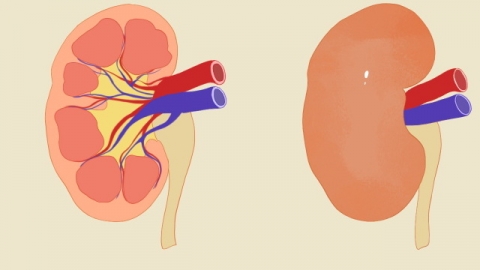How to treat kidney atrophy
Under normal circumstances, kidney atrophy may result from aging-related degeneration of renal tissue, long-term unhealthy lifestyle habits, chronic glomerulonephritis, renal artery stenosis, or urinary tract obstruction. It is recommended to seek timely medical attention to determine the underlying cause and, under a doctor's guidance, improve the condition through general management, medication, surgical treatment, or other methods. Specific analyses are as follows:

1. Age-related renal tissue degeneration: With increasing age, nephron numbers gradually decrease, renal parenchyma becomes thinner, kidney volume shrinks, and kidney function slowly declines. Daily measures include limiting salt intake to no more than 5 grams per day, avoiding excessive high-protein diets, maintaining regular sleep patterns, engaging in moderate exercise, and routinely monitoring kidney function to slow the rate of renal degeneration.
2. Long-term unhealthy lifestyle habits: Chronic behaviors such as staying up late, excessive alcohol consumption, and smoking increase the metabolic burden on the kidneys and damage renal tissue, leading to atrophy. It is essential to quit smoking and drinking completely, ensure 7–8 hours of sleep each night, avoid overexertion, drink plenty of water to promote metabolism, and reduce toxin accumulation in the kidneys.
3. Chronic glomerulonephritis: Persistent damage to the glomeruli, with repeated inflammatory stimulation, leads to renal fibrosis and subsequent kidney atrophy, often accompanied by proteinuria and hematuria. Medications such as Valsartan capsules, Benazepril tablets, and Hydrochlorothiazide tablets should be taken as prescribed to control blood pressure, reduce urinary protein, and protect kidney function.
4. Renal artery stenosis: Narrowing of the renal artery lumen reduces blood supply to the kidneys. Prolonged ischemia leads to renal tissue atrophy and may be associated with hypertension. Treatment options include renal artery balloon angioplasty to expand the narrowed vessel and improve perfusion, or placement of a renal artery stent to maintain vascular patency.
5. Urinary tract obstruction: Obstruction caused by kidney stones, ureteral strictures, or similar conditions impedes urine outflow, increases intrarenal pressure, compresses renal tissue, and causes atrophy, often accompanied by flank pain and reduced urine output. Treatment depends on the cause—for example, ureteroscopic lithotripsy and stone removal for kidney stones, or ureteroplasty to relieve strictures—aimed at restoring normal urine flow, relieving kidney compression, and preserving residual renal function.
In daily life, maintain a light diet, avoid spicy and greasy foods, and consume moderate amounts of high-quality protein such as eggs and milk. Pay attention to keeping warm, prevent respiratory infections, avoid increasing the burden on the kidneys, maintain a positive mindset, actively cooperate with treatment, and support overall kidney health.







